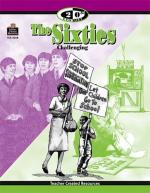|
This section contains 871 words (approx. 3 pages at 300 words per page) |

|
It took some time to find that none of this was true and that 3C-48 was really a quasar. The Harvard Observatory had a collection of pictures of the region over many years. Harlan J. Smith and Dorrit Hoffleit of the Yale Observatory looked over twenty-five hundred plates in the Harvard collection taken from 1895 to 1952. In 1961 they reported they found no supernova detected by light astronomy in the region. They thought 3C-48 looked like some exploded object, though — maybe a much earlier supernova. In 1962 British astronomer Cyril Hazard located another "star" like 3C-48, named 3C-273. American Maarten Schmidt at Mount Palomar, who took photos and spectra of 3C-273, found that the normal spectrum lines were red-shifted, a condition caused by objects moving away from the observer at a high speed. Schmidt calculated 3C-273 was two billion light years away.
Quasars as Old as the Universe.
|
This section contains 871 words (approx. 3 pages at 300 words per page) |

|




